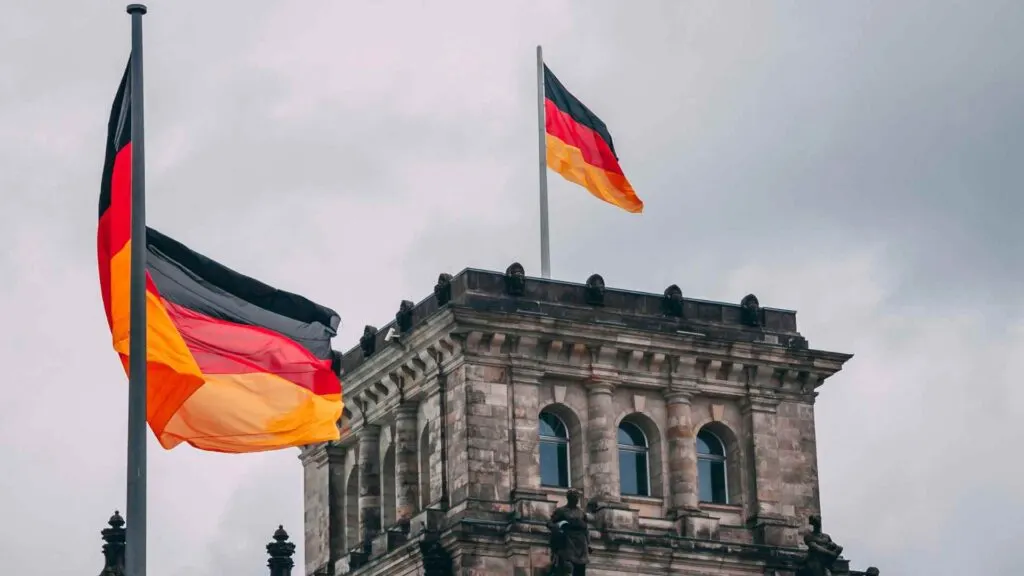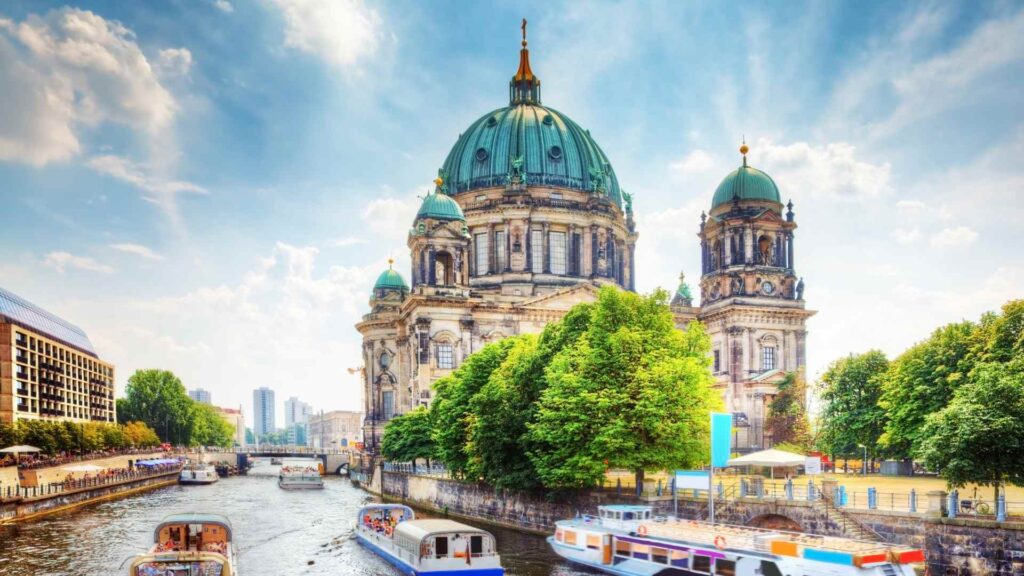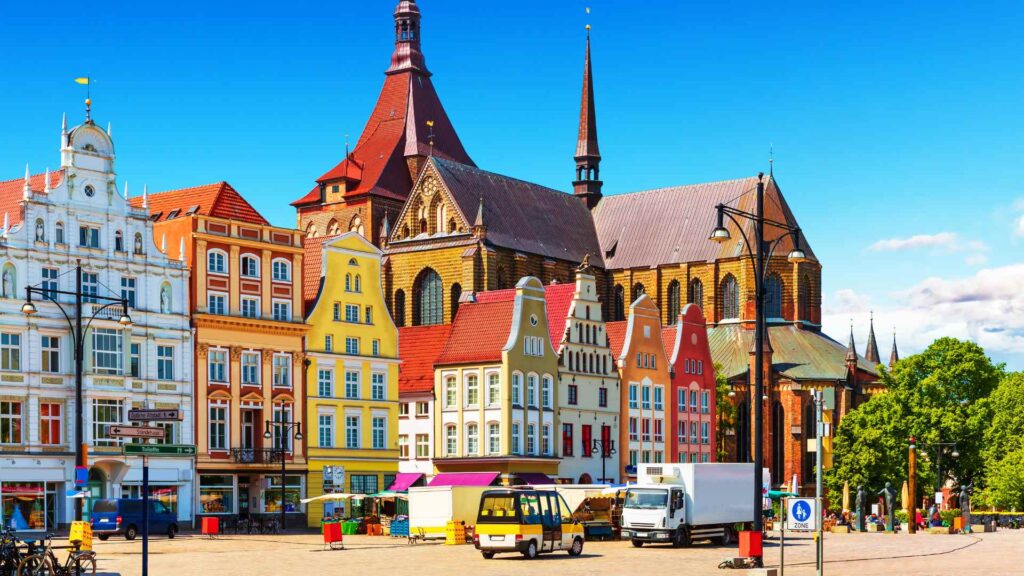Germany is a country rich in culture, history, and innovation.
Known for its castles, sausages, and efficiency, there’s a fascinating story behind every corner. Dive into these fun facts about Germany to uncover what makes this country truly unique!
Geography and Nature of Germany
- Germany’s Forests Cover Over a Third of the Country: About 33% of Germany is forested, providing habitats for diverse wildlife.
- The Black Forest Inspired Fairy Tales: The famous Black Forest is known for its dark, dense woods, which inspired Brothers Grimm’s fairy tales.
- Home to the Most Castles in Europe: With over 25,000 castles, Germany boasts more than any other European country.
- The Rhine River is the Longest in Germany: Stretching over 760 miles, it flows through six countries, including Germany.
- Lake Constance Borders Three Countries: This beautiful lake is shared by Germany, Austria, and Switzerland.
- Germany is Home to Europe’s Largest Woodland, the Bavarian Forest: The Bavarian Forest is one of the oldest and largest forests in Europe.
- Germany Has Nearly 100 Nature Parks: There are 97 officially recognized nature parks, making up over 25% of the country’s area.
- The Zugspitze is Germany’s Tallest Mountain: Standing at 2,962 meters, it offers panoramic views of the Alps.
- Unique Biosphere Reserves: Germany has 18 UNESCO-designated biosphere reserves for protecting natural habitats.
- Home to the Largest Flower Festival: Every spring, Baden-Baden hosts the beautiful Blossom Festival.
- Sylt Island Has Sand Dunes Up to 100 Meters High: The scenic island of Sylt has beaches famous for their towering sand dunes.
- Germany is Europe’s Third-Largest Forested Nation: Following Sweden and Finland, Germany has the third-largest forested area in Europe.
- Germany has Nearly 200,000 Miles of Hiking Trails: Trails across forests, mountains, and rivers make it a hiker’s paradise.
- The Spreewald is Germany’s ‘Venice’: This UNESCO-protected biosphere has canals where you can paddle through lush forests.
- One of the World’s Deepest Caves: Germany’s Riesending Cave descends about 1,150 meters underground.

German Culture and Traditions
- Oktoberfest Began as a Wedding Celebration: The festival originally celebrated the marriage of King Ludwig I in 1810.
- Germany Invented the Christmas Tree: The Tannenbaum tradition dates back to the 16th century.
- Over 300 Varieties of Bread: Bread is taken seriously in Germany, with varieties specific to each region.
- Christmas Markets Originated Here: Germany’s Christmas markets date back to the Middle Ages, with the Nuremberg market as one of the oldest.
- St. Nicholas Day on December 6: Children receive gifts in their shoes on Nikolaustag.
- Karneval Celebrations Rival Mardi Gras: Germans celebrate “The Fifth Season” in the lead-up to Lent with parades and costumes.
- Easter Egg Hunts Started in Germany: The idea of hiding eggs for Easter is believed to have originated in Germany.
- The Advent Calendar is a German Tradition: Used to count down to Christmas, this tradition began in the 19th century.
- Schultüte for School Starters: Kids receive a “school cone” full of treats on their first day of school.
- May Day Celebrations: This spring festival involves dancing around a maypole in many German villages.
- Waldkindergarten – Forest Kindergarten: Some kids in Germany attend outdoor kindergartens to connect with nature.
- Germany is Big on Recycling: Germany has one of the highest recycling rates in the world.
- The Concept of Heimat: Heimat is a unique German word representing one’s sense of belonging.
- Germany is the Land of Poets and Thinkers: Goethe, Schiller, Kant, and Einstein are just a few world-renowned German intellectuals.
- Naming Rules for Children: Parents must choose names that clearly indicate the gender of their child.

German Cuisine and Food Facts
- The World’s Largest Beer Consumer: Germans consume around 104 liters of beer per person per year.
- Over 1,500 Varieties of Sausages: Germany is known for its sausages, from bratwurst to currywurst.
- Pretzels Were Invented in Germany: The traditional German brezel dates back centuries.
- Home of the World’s First Beer Purity Law: The Reinheitsgebot of 1516 allows only water, barley, and hops in beer.
- Sauerkraut is a German Staple: The word means “sour cabbage” and is enjoyed with many meals.
- Germany Produces Over 200 Varieties of Cheese: Most cheeses are made from cow’s milk, but goat and sheep cheeses are also popular.
- Gummy Bears Were Invented in Germany: Haribo invented gummy bears in 1922 in Bonn, Germany.
- The Currywurst is a Beloved Street Food: Currywurst is sausage topped with curry ketchup sauce.
- German Bread Has UNESCO Recognition: German bread culture is so unique that it was added to UNESCO’s Intangible Cultural Heritage list.
- Popular Beer Gardens in Munich: Munich’s beer gardens are iconic and serve traditional German brews in huge steins.
- Spätzle is Germany’s Take on Pasta: Spätzle noodles are often served with cheese or as a side dish to meats.
- The Berliner is a Classic Doughnut: This jelly-filled treat is especially popular during Karneval season.
- Asparagus Season is Celebrated in Spring: Known as “Spargelzeit,” Germans love white asparagus, especially in May.
- Pumpernickel is a Unique German Bread: Made from coarse rye, it’s known for its distinct flavor and long baking time.
- Germans Love Mineral Water: Sparkling mineral water is much preferred over still water in Germany.

German Language Facts
- German is the Most Widely Spoken Native Language in Europe: With over 90 million native speakers.
- Longest German Word is 63 Letters: “Rindfleischetikettierungsüberwachungsaufgabenübertragungsgesetz,” though not in use anymore, is an example.
- German is a Pluricentric Language: It has regional variations in Germany, Austria, and Switzerland.
- The Word ‘Kindergarten’ Comes from German: Friedrich Fröbel created the concept of “children’s garden” in 1837.
- German Has Three Genders: Nouns are classified as masculine, feminine, or neuter.
- There Are 16 Official Regional Dialects: These dialects can sometimes be hard for other Germans to understand.
- The German Language Has No Official Body: Unlike French or Spanish, there’s no official institution for language regulation.
- Many English Words Have German Roots: Words like angst, doppelgänger, and blitzkrieg come from German.
- Compound Words Are Common: Germans love combining words, leading to long but descriptive words.
- German Uses the Latin Alphabet with Extra Characters: The umlauts (ä, ö, ü) and the ß (Eszett or “sharp S”) are unique to German.
- “Schadenfreude” is a German Concept: This word describes taking pleasure in another’s misfortune.
- Germanic Runes Were Once Commonly Used: Before the Latin alphabet, runes were used in Germanic tribes.
- Germans Use Different Greetings by Region: From “Hallo” to “Servus” to “Moin,” greetings change across the country.
- German is the Official Language in Six Countries: Germany, Austria, Switzerland, Liechtenstein, Luxembourg, and Belgium.
- Some Dialects Are Becoming Endangered: With younger generations leaning towards standard German, certain dialects are fading.
Famous German Innovations and Inventions
- The Printing Press was Invented in Germany: Johannes Gutenberg created the press in 1440, revolutionizing literature.
- Aspirin was Invented in Germany: Bayer developed the drug in 1897, and it remains popular worldwide.
- The Diesel Engine was Developed Here: Invented by Rudolf Diesel, it became a key component in modern transportation.
- Germany Pioneered the MP3 Format: The compression format was developed at the Fraunhofer Institute.
- The First Automobile was Invented in Germany: Karl Benz created the first gas-powered car in 1886.
- X-Rays were Discovered by a German Scientist: Wilhelm Röntgen discovered X-rays in 1895.
- Beer Steins were Designed to Prevent Bugs: The lids on beer mugs originally served to keep bugs out during the Black Plague.
- The Modern University System Originated Here: Humboldt University in Berlin introduced the modern research university.
- Germany Gave Us Fanta: The Coca-Cola Company invented Fanta in Germany during WWII.
- The Bunsen Burner was Invented in Germany: This common lab tool was developed by chemist Robert Bunsen.
- Contact Lenses Were Developed by a German Scientist: Adolf Gaston Eugen Fick created the first pair of contact lenses in 1887.
- The Accordion is a German Invention: Christian Friedrich Ludwig Buschmann invented it in the early 19th century.
- Germany was Home to the World’s First Magazine: “Erbauliche Monaths Unterredungen” was published in 1663 in Hamburg.
- Germans Invented the Kindergarten System: Friedrich Fröbel’s approach shaped early childhood education worldwide.
- The Record Player Was Invented in Germany: Emile Berliner invented the gramophone, which became a foundation for audio recording.
Bonus Facts About Germany
- Germany has over 25,000 castles.
- Berlin has more bridges than Venice.
- German law prohibits peeking through windows after dark.
- You can legally drink beer at age 16 in Germany.
- Oktoberfest beer is stronger than typical German beer.
- Hamburg has the second largest port in Europe.
- German universities offer free tuition for most programs.
- Germany has the lowest birthrate in the EU.
- Germans invented the modern cuckoo clock.
- Germany is home to Europe’s most powerful economy.
- Cologne Cathedral took over 600 years to build.
- Berlin is nine times bigger than Paris.
- The Brothers Grimm collected fairy tales here.
- German Autobahn has sections with no speed limits.
- Germans are the second-largest coffee drinkers in Europe.
- Germany has more zoos than any other country.
- The world’s first book was printed in German.
- Germany has strict rules on Sunday noise.
- Some traffic lights feature little hats on the figures.
- Berlin has one of the largest club scenes in Europe.
- The world’s largest beer festival is held in Munich.
- German engineering is world-renowned.
- Einstein was born in Germany.
- Heidelberg has the oldest university in Germany.
- Germans enjoy a paid 13th-month salary.
- The German parliament is called the Bundestag.
- Germany’s national anthem has no official lyrics.
- There’s a museum dedicated to currywurst in Berlin.
- Germans celebrate the Reformation Day on October 31.
- The Federal Eagle is Germany’s national symbol.
- Germany has more than 6,200 museums.
- Nearly 2 million Germans live outside Germany.
- Leipzig is a hub for book publishing in Germany.
- Munich hosts the biggest Volksfest annually.
- German students learn English from an early age.
- The oldest brewery in the world is in Bavaria.
- Germans love dogs and have special rules for them.
- Public nudity is accepted in certain places.
- Football is the most popular sport in Germany.
- Germany was reunified in 1990.
- Germans invented the word “Kindergarten.”
- Germany has had chancellors since the 1800s.
- Bremerhaven hosts one of Europe’s largest fish markets.
- Germans have multiple Christmas traditions.
- German highways are among the safest in Europe.
- St. Michael’s Church in Hamburg has a 400-year history.
- Bicycling is very popular in Germany.
- German television is mainly financed by public fees.
- Frankfurt is one of Europe’s financial capitals.
- Germany’s national tree is the oak.
